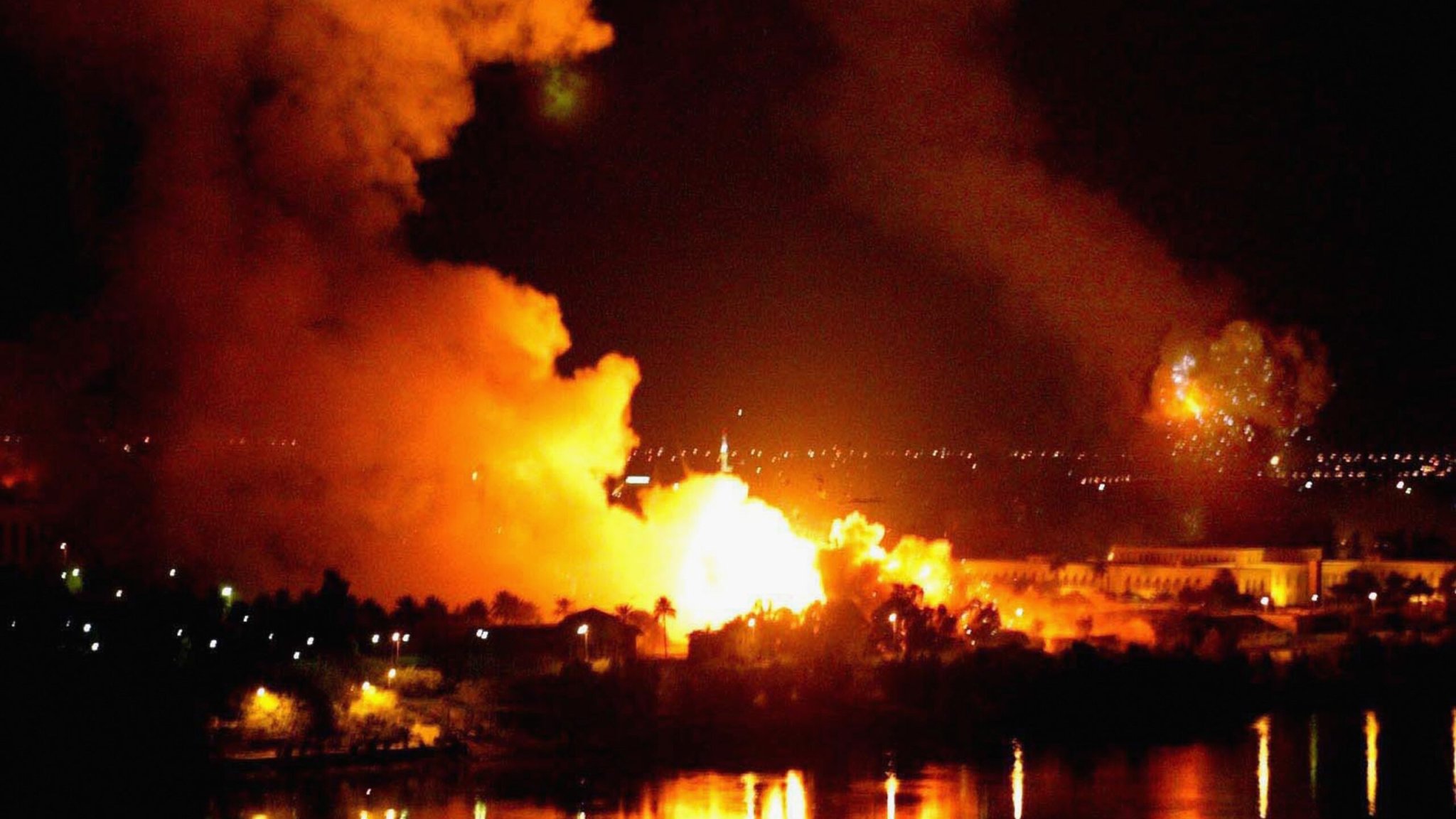

Twenty years ago today, on March 19, 2003 the war in Iraq started. American and allied forces began the war not on the ground but in the skies. What unfolded was dozens of airstrikes across Iraq targeting early warning sites and Iraqi leadership, meant to pave the way for the ground invasion that launched March 20.
“On my orders, coalition forces have begun striking selected targets of military importance to undermine Saddam Hussein’s ability to wage war. These are opening stages of what will be a broad and concerted campaign,” President George W. Bush said in his address to the United States the evening of the 19th.
Subscribe to Task & Purpose Today. Get the latest military news, entertainment, and gear in your inbox daily.
The air campaign on March 19 was mostly forgotten once ground operations began and coalition forces took Baghdad, but the first day of the war saw the United States and its allies quickly succeed in one goal and fail at its second. The former was the mission to take out many of Iraq’s early warning systems, to provide cover and confusion for the ground operation that followed. Members of the 160th Special Operations Airborne Regiment used helicopters to attack more than 70 sites along Iraq’s western and southern borders, which also gave special operations ground forces leeway to insert into the country.
The other mission was to take out Iraq’s leadership in a series of decapitation strikes. Many of these figures would end up on the infamous deck of cards that were introduced by the United States a month later. The strikes were changed to focus on Saddam Hussein himself and his two sons Uday and Qusay, who were said to be visiting the al-Dura Farms complex at the time. The bunker buster bombs and cruise missiles hit the area and caused casualties, but the Husseins were not present.
At the time of the invasion, the Bush administration repeatedly said that the justification to go after Hussein was his possession and development of weapons of mass destruction and his ties to al-Qaeda, both of which turned out to be false.
The opening airstrikes were meant to be disruptive, to leave Iraqi defenders confused and unorganized as coalition forces moved in. The initial targeted strikes wrapped up on March 21, followed quickly by a wider air campaign that involved more than 1,500 air strikes, part of a “shock and awe” strategy to not only take out Iraqi targets but discourage Iraqi forces from fighting back.
Although Bush stated in his March 19, 2003 address that “coalition forces will make every effort to spare innocent civilians from harm,” by the end of the first year of the war more than 13,000 civilians had been killed, according to Brown University’s Cost of War project. One civilian death took place on March 19, 2003, at the al-Dura farm, where Hussein was not present.
The March 19 air campaign was the opening salvo of the years-long war, which by the time the United States withdrew troops in 2011, killed 4,923 American and allied troops, more than 30,000 Iraqi fighters and by conservative estimates hundreds of thousands of civilians.
On March 20 coalition forces crossed over the Iraqi border, launching a ground offensive. Baghdad fell on April 5. Bush would give his “mission accomplished” speech on May 1, claiming that “major combat operations in Iraq have ended,” although senior Iraqi officials remained unaccounted for and a long and deadly Iraqi insurgency was beginning. Uday and Qusay Hussein would be killed by special operations forces on July 22, and Saddam would be captured many months later on Dec. 13.
The latest on Task & Purpose
- A major US Army formation just dropped new restrictions on tank names
- How Russia uses US military veterans in its propaganda war against Ukraine
- Jon Bernthal is back as The Punisher in ‘Daredevil: Born Again’
- The Russian military is so low on ammo that troops are reduced to fighting with e-tools
- How the World War I Maxim machine gun became a weapon of choice in Ukraine
